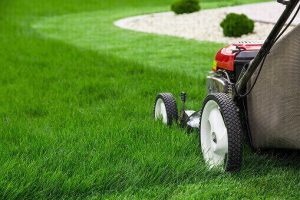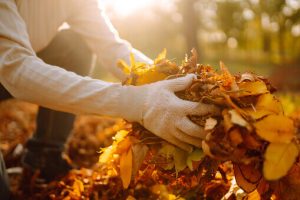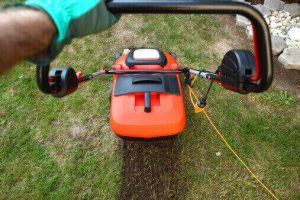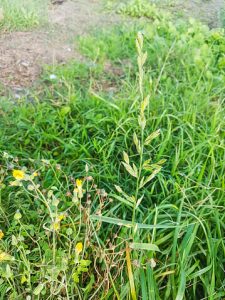We all know that winter is the time when most lawn grass, plants, and trees rest. It’s practical to keep it off the lawn during winter to let it rest. The lawn grass will damage easily and will not repair itself until the spring.
It’s true that keeping completely off the lawn throughout the winter doesn’t sound practical enough but you can take certain measures to ensure winter lawn care during the winter months.
6 Effective Ways to Take Care of Lawn during Winter
Here are some handy tips to look after your winter lawn.
Rest the lawn
It’s true that most grass plants remain dormant in the cool season. It’s more common in the northern states of the US where the temperature can easily drop under zero. It’s too cold for any grass to grow; hence most people patiently wait until spring.
However, in the southern states of the US, cool-season ryegrass is often overseeded into the turf to maintain a green lawn. It allows you to fertilize the grass even during winter to maintain the lush green texture.
If your hometown often sees snowfall, it’s better to rest the lawn during winter as much as possible. You should also limit the foot traffic when the lawn is wet or frosty to avoid getting bald patches over the winter lawn.
Mowing
Mowing the grass on the lawn during winter is only recommended when the temperature is right. Avoid mowing your lawn if heavy frosts are expected or if the ground is very wet.

Most of the time, mowing the lawn grass to keep it short comes with no advantages. Trimming the lawn grass in the winter discourages garden pests from settling in and making it their home. Garden pests can easily terrorize your lawn grass when it’s left unattended for three or four consecutive months. No wonder, those pests will soon start crawling inside your home. Trimming the grass also allows the lawn to breathe.
To ensure that you don’t completely make your lawn look like bald patches, we recommend mowing less regularly than in the summertime.
Clear leaves and debris
Once the fall season sets in, the dried leaves will start piling up on your lawn and will continue throughout the winter. If you do not clear them on it, you might have to deal with a lot of debris later. The piles of dead leaves can also become home to many garden pests.

When your lawn is covered with leaves, it is not receiving an adequate amount of sunlight and oxygen. Additionally, wet leaves sitting dormant on your lawn will encourage the growth of fungus.
You can use a light rake or brush if your lawn is smaller in size. You will clear the lawn from leaves and debris at no time. However, for larger lawn areas with a lot of leaves, we recommend using leaf blowers and rakes to easily collect the debris in one place. This not only makes your garden look much more clean and tidy but also helps the lawn by opening up pores for the root system below and allowing it to breathe.
As an option, you can consider mulching your leaves to prepare compost for your lawn. Dry leaves, twigs, and plants are organic matters that can be composted into fine granules or fertilizer to be used in the lawn. The best way to mulch leaves is to use a leaf mulcher or a composter.
Aeration
Winter is the best time to aerate your lawn as it allows the dormant soil beneath the lawn to breathe. Aerate the lawn to allow oxygen, frost, and water to get right into the ground which will help in breaking up any soil compaction and improve drainage.

For smaller lawns, you can a fork or a spiking machine to turn the soil. You can easily buy them at Amazon or even hire them from local garden centers. For the sizeable lawns, we recommend a power plug aerator that removes soil plugs approximately 2 — 3 inches deep and 0.5 — 0.75 inches in diameter, and about 2 — 3 inches apart.
Breaking through thatch to promote drainage also discourages the development of “snow molds” during snow melting. These fungal infections can stain the grass pink or gray.
Avoid Salt Damage
De-icing agents contain salt that can easily damage lawn grass and plant. Also known as “Physiological drought,” it impedes nutrient uptake and creates bare spots on your lawn.
If you are aware of salt spray and melt runoff coming into contact with your lawn, ensure to water your lawn deeply as soon as ground temperatures are above freezing. This will help flush out the salt.
Instead of using de-ice agents with sodium contents, you can choose products made with calcium chloride.
Dealing with worms
Worms are actually good to help improve the nutrient content of the soil. One of the issues with earthworms is that they often form worm casts over the grass on the lawn during winter that becomes the host for weed seeds.
These worms consume and digest organic matter in the soil. They then expel it from their gut onto the soil surface. This creates the coil of smooth soil called worm casts. The worm casts are best left to dry and then swept away with a stiff brush.
How to take care of winter ryegrass?
Growing ryegrass is more common in lawns that do not witness snowfall or an extreme temperature drop. If your lawn is filled with ryegrass, you can consider irrigating it to keep it healthy and green throughout the winter.

Here is how you can establish a healthy lawn with winter ryegrass.
- You must start with carefully mowing and scalping the lawn to adequately remove all the grasses.
- Overseed the lawn with ryegrass seed using a rotary spreader. It’s best to put down 10 lbs. of seed per 1,000 square feet of lawn.
- Once the seed is toned, sprinkle it with water to keep it most for at least two weeks. Depending on the temperature, you may need to water your lawn thrice a day. Make sure not to overwater the lawn which can create water puddles.
- Next, you will need to fertilize the lawn with the right fertilizer to stimulate root growth. Choose a fertilizer that is high in potassium and phosphorus, but not necessarily nitrogen.
- About 10 days after fertilizing, the lawn should be mowed to remove the first layer of winter grass.
- After this, you can reseed spots where the grass didn’t take. You can reseed by hand. Make sure to evenly spread the seed into the bare spots.
- To keep the ryegrass healthy, you would need to fertilize your lawn two or three times throughout the season. Using a greater amount of nitrogen will help to grow and ensure lawn care.
With these handy tips, you are likely to avoid the “winterkill” of your lawn and maintain the same lush green texture throughout the season.
Leave a Reply